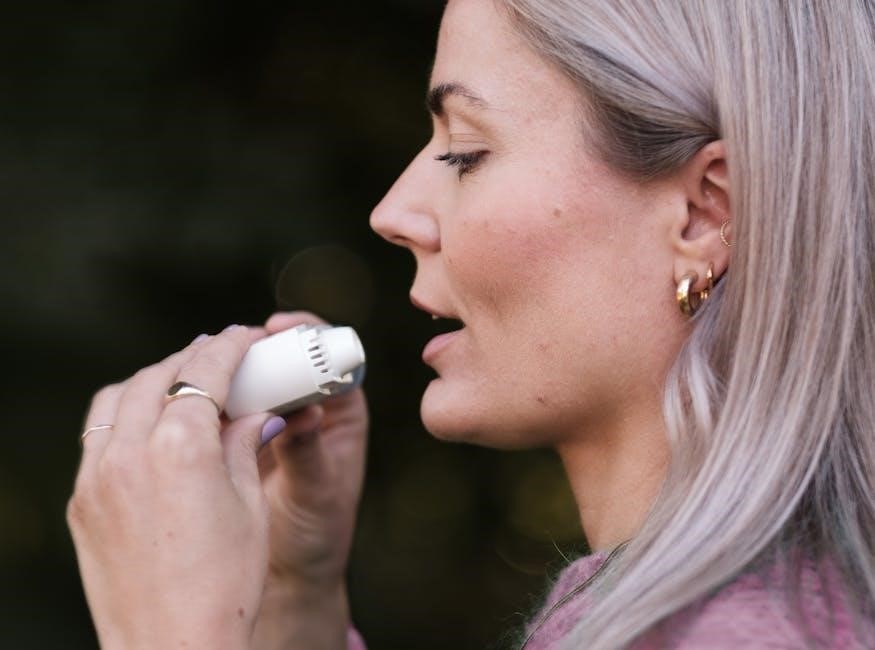Definition and Importance
A chemistry cheat sheet is a document that provides a concise overview of key concepts and formulas in chemistry, making it an essential tool for students and educators. The importance of a chemistry cheat sheet lies in its ability to help individuals quickly reference and review important information, such as atomic structures and periodic tables. By having a chemistry cheat sheet, students can better understand and retain complex concepts, leading to improved academic performance. Additionally, a chemistry cheat sheet can be a valuable resource for educators, allowing them to create engaging and informative lesson plans. Overall, a chemistry cheat sheet is a valuable resource that can benefit anyone looking to learn or teach chemistry, and can be easily downloaded and printed in pdf format online. Chemistry cheat sheets are widely available and can be customized to meet individual needs.
Availability and Accessibility
Chemistry cheat sheets are widely available online, making them easily accessible to students and educators. Many websites offer free downloads of chemistry cheat sheets in pdf format, allowing users to quickly and easily access the information they need. Some websites also offer customizable chemistry cheat sheets, allowing users to tailor the content to their specific needs. Additionally, many online resources provide fillable pdf versions of chemistry cheat sheets, making it easy to complete and print them. Overall, the availability and accessibility of chemistry cheat sheets make them a convenient and valuable resource for anyone looking to learn or teach chemistry. With just a few clicks, users can download and print a chemistry cheat sheet, making it a great tool for last-minute studying or quick reference. Online resources have made chemistry cheat sheets more accessible than ever.

Atomic Structure and Periodic Table
Atomic structure and periodic table concepts are explained in chemistry cheat sheets for easy understanding and reference online in pdf format always available
Atomic Number and Mass
The atomic number and mass are fundamental concepts in chemistry, and a cheat sheet can provide a quick reference to these values for each element.
The atomic number is a unique identifier for each element, and the atomic mass is the total number of protons and neutrons in an atom’s nucleus.
A chemistry cheat sheet can help students and educators to easily look up these values and understand the relationships between different elements.
The cheat sheet can be downloaded and printed in pdf format, making it a convenient study aid.
By using a chemistry cheat sheet, individuals can quickly access the information they need to learn and understand atomic number and mass.
This can be especially helpful when working on chemistry problems or studying for a test.
The cheat sheet can also be used as a reference guide in the laboratory or classroom.
Overall, a chemistry cheat sheet is a valuable tool for anyone studying chemistry.
It provides a concise and easily accessible source of information on atomic number and mass.
The cheat sheet is available online and can be downloaded and printed in pdf format for easy use.
Periodic Table of Elements
The periodic table of elements is a crucial tool in chemistry, and a cheat sheet can provide a comprehensive guide to its organization and structure.
The periodic table is arranged by atomic number, with elements having similar properties and electron configurations grouped together.
A chemistry cheat sheet can help individuals understand the relationships between different elements and their positions in the periodic table.
The cheat sheet can include information on element symbols, atomic numbers, and atomic masses, as well as other relevant data.
By using a periodic table cheat sheet, students and educators can quickly identify patterns and trends in the periodic table.
This can be especially helpful when studying chemistry or working on chemistry problems.
The cheat sheet can be downloaded and printed in pdf format, making it a convenient study aid.
It provides a concise and easily accessible source of information on the periodic table of elements.

Chemistry Equations and Formulas
Chemistry equations and formulas are used to describe chemical reactions and processes in a chem cheat sheet pdf for easy reference and study online always
Writing Chemical Formulas
Writing chemical formulas is a crucial aspect of chemistry, and a chem cheat sheet pdf can provide guidance on this topic. The process involves writing the elemental symbols, determining the charges, and finding the common multiple of the charges. This information is essential for students and educators to understand and apply chemical reactions and processes. A chem cheat sheet pdf can serve as a quick reference guide, outlining the steps and rules for writing chemical formulas. By using a chem cheat sheet pdf, individuals can improve their understanding of chemical formulas and enhance their ability to write and balance equations. Additionally, a chem cheat sheet pdf can provide examples and exercises to practice writing chemical formulas, making it a valuable resource for learning and reviewing chemistry concepts. Chemistry basics are also covered in these resources.
Acids and Bases
A chem cheat sheet pdf typically includes a section on acids and bases, which is a fundamental concept in chemistry. Acids are defined as ion acceptors, while bases are defined as ion donors. The cheat sheet pdf provides a list of strong acids, such as HCl and HBr, and strong bases, such as LiOH. It also explains the characteristics of acids and bases, including their pH levels and chemical properties. By referencing a chem cheat sheet pdf, students and educators can quickly review and understand the key concepts related to acids and bases, including acid-base reactions and equilibrium. This information is essential for understanding various chemical processes and reactions, and a chem cheat sheet pdf serves as a handy reference guide for learning and reviewing these concepts. Chemistry students find these resources extremely helpful for exams and assignments.

Cheat Sheet Contents
Cheat sheet contents include essential chemistry formulas, equations, and concepts in pdf format for easy reference and study online always available
Valence Electrons and Electron Configuration
Valence electrons and electron configuration are crucial concepts in chemistry, and a cheat sheet can help students understand these topics better. The valence electrons are the electrons in the outermost shell of an atom, and they play a key role in determining the chemical properties of an element. The electron configuration, on the other hand, is the arrangement of electrons in an atom, and it can be used to predict the chemical behavior of an element. A chem cheat sheet pdf can provide a concise and organized summary of these concepts, including the electron configuration of different elements and the number of valence electrons in each element. This can be a valuable resource for students studying chemistry, as it can help them to quickly review and understand these important concepts. By using a cheat sheet, students can gain a deeper understanding of valence electrons and electron configuration.
Chemistry Basics and Concepts
Chemistry basics and concepts are fundamental to understanding the subject, and a cheat sheet can provide a comprehensive overview. A chem cheat sheet pdf can cover topics such as atomic structure, chemical bonding, and chemical reactions. It can also include information on different types of chemical reactions, such as synthesis and decomposition reactions. Additionally, a cheat sheet can provide a list of key chemistry terms and definitions, making it easier for students to review and understand the material. By using a cheat sheet, students can gain a solid foundation in chemistry basics and concepts, which can help them to succeed in their studies. The cheat sheet can be a valuable resource for students, providing a quick and easy reference guide to the key concepts and principles of chemistry, and helping them to build a strong understanding of the subject. Chemistry basics are essential.

Download and Print Options
Download and print chem cheat sheet pdf online in various formats for easy access and convenience always available online now
PDF and Word Formats
The chem cheat sheet pdf is available in various formats, including PDF and Word, to cater to different user preferences and needs, making it easily accessible online.
The PDF format is ideal for printing and sharing, while the Word format allows for editing and customization, providing flexibility and convenience to users.
The availability of these formats enables users to download and print the chem cheat sheet pdf in a format that suits their requirements, whether for personal or educational use.
Additionally, the PDF and Word formats can be easily shared and distributed among students, educators, and researchers, facilitating collaboration and knowledge sharing.
Overall, the chem cheat sheet pdf in PDF and Word formats is a valuable resource for anyone looking to learn and understand chemistry concepts and principles, and can be used in a variety of settings, including classrooms and research institutions.
Online Resources and Links
Online resources and links provide additional support and information for users of the chem cheat sheet pdf, offering a range of websites and web pages to explore.
These resources include online tutorials, video lectures, and interactive simulations, which can help to clarify complex chemistry concepts and principles.
The links to online resources are often included in the chem cheat sheet pdf, making it easy for users to access and utilize them.
Some popular online resources include educational websites, online forums, and social media groups, where users can connect with others and share knowledge and ideas.
By providing access to these online resources and links, the chem cheat sheet pdf becomes a more comprehensive and useful tool for learning! and understanding chemistry, and can be a valuable supplement to traditional teaching methods and materials, and can help users to stay up to date with the latest developments in the field of chemistry.
and Recommendations
The chem cheat sheet pdf is a valuable resource for students and educators, providing a comprehensive summary of key chemistry concepts and formulas.
In conclusion, the chem cheat sheet pdf is a useful tool for learning and reviewing chemistry, and can be a valuable supplement to traditional teaching methods and materials.
The recommendations for using the chem cheat sheet pdf include downloading and printing it for easy reference, and using it in conjunction with other study materials and resources.
By following these recommendations, users can get the most out of the chem cheat sheet pdf and improve their understanding of chemistry.
Overall, the chem cheat sheet pdf is a helpful resource that can be used in a variety of settings, from classrooms to study groups, and can be a valuable aid for anyone looking to learn and understand chemistry.












